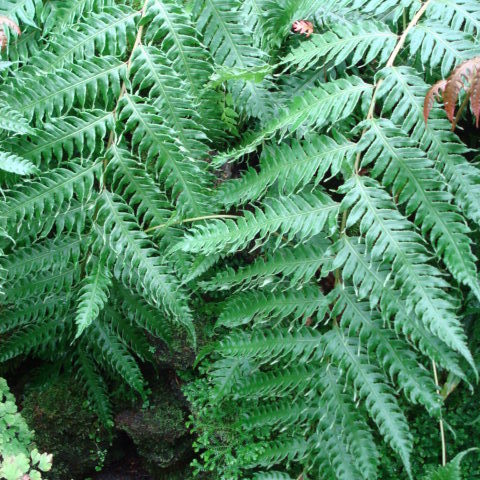Rhizome decumbent, dark brown, stout, up to 3 cm in diam., densely scaly; scales brown, lanceolate, 2.2-2.7 cm, membranous, entire, apex long acuminate. Stipes tufted, 30-100 cm, 5-8 mm in diam., base densely scaly; upper part of stipe and rachis with fewer brown, fibriform scales; lamina deeply bipinnatifid, elliptic or ovate-lanceolate, 30-100 × 20-60 cm, leathery; pinnae 7-15 pairs, subsessile or shortly stalked, broadly lanceolate; middle pinnae 15-35 × 4-12 cm, cut 3/4 way to costa, base rounded-truncate, unequal, apex caudate; lobes 14-20 pairs, close, oblique, oblong-lanceolate, sometimes falcate, lower pairs of lobes slightly shortened, middle lobes 1-6 × 0.8-1.2 cm, margin serrulate with sharp, long teeth; veins anastomosing with 2 or 3 rows of areoles along costae and costules, marginally free, simple or forked. Bulbils single or multiple, large, scaly, subterminal below rachis tip at base of upper pinna. Sori occupying costular areoles, oblong, sunken in rimmed depressions; indusia attached to outer vein, dark brown, thickly membranous. 2n = 68.
A fern.

